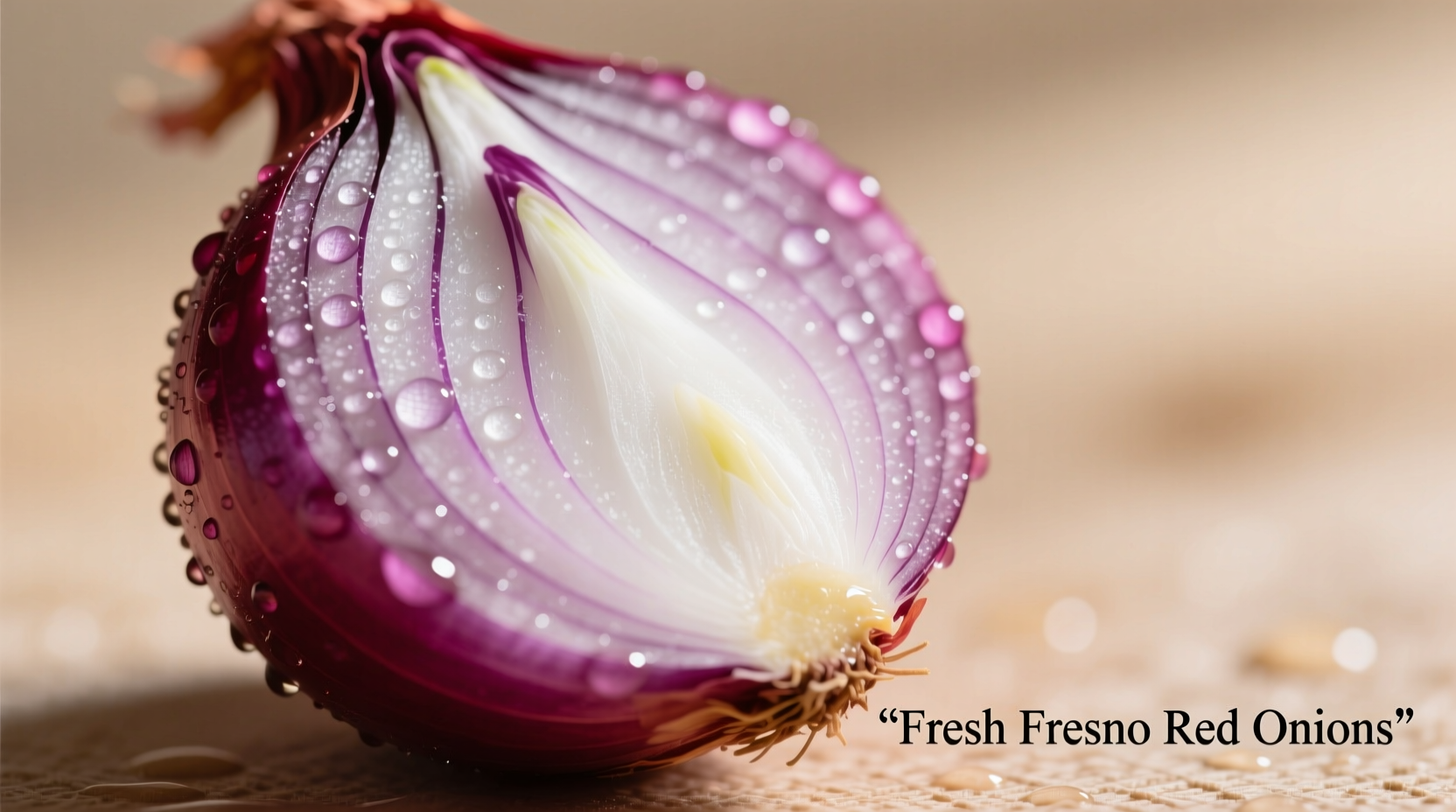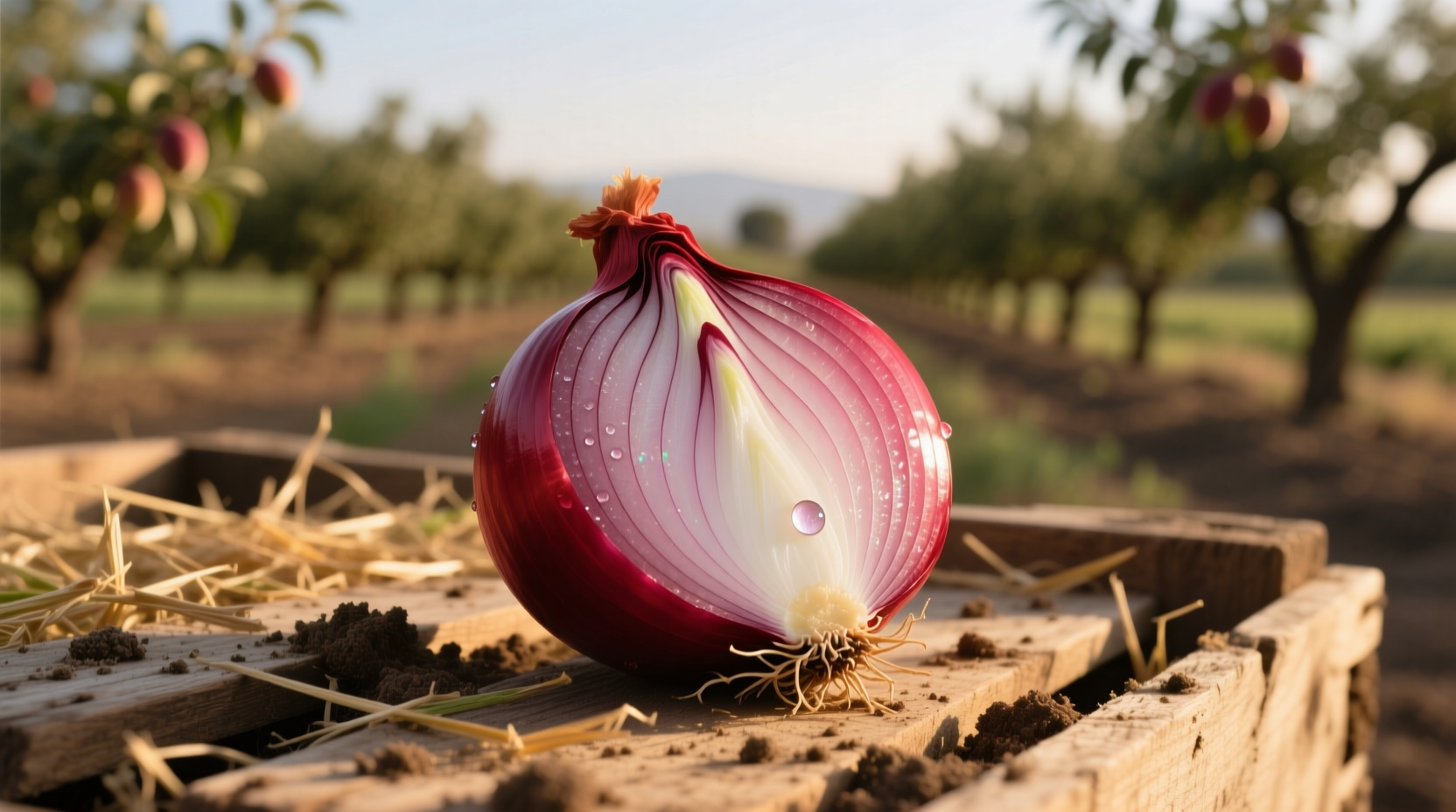When you reach for onions in your kitchen, understanding the subtle but significant differences between varieties can transform your dishes from ordinary to exceptional. Fresno red onions offer a culinary advantage that many home cooks overlook - their balanced sweetness and moderate bite create perfect flavor harmony in raw preparations where regular red onions might overwhelm other ingredients.
What Exactly Are Fresno Red Onions?
Developed in California's San Joaquin Valley during the mid-20th century, Fresno red onions represent a specific cultivar (Allium cepa var. aggregatum) bred for superior eating quality. Unlike their name suggests, these aren't actually grown exclusively in Fresno - the name refers to the agricultural research station where they were developed. These onions feature deep purple-red skin with crisp, white to pale purple flesh that maintains excellent texture when raw.
According to the University of California Agriculture and Natural Resources, Fresno red onions contain approximately 8-10% natural sugars by weight, compared to 5-7% in standard red onions, contributing to their distinctive mildness. Their growing season typically runs from April through September, making them a spring and summer specialty in most markets.

Fresno Red Onions vs. Regular Red Onions: Key Differences
| Characteristic | Fresno Red Onions | Regular Red Onions |
|---|---|---|
| Size and Shape | Smaller, more rounded (1.5-2.5 inches diameter) | Larger, flatter (2.5-3.5 inches diameter) |
| Flavor Profile | Milder, sweeter (3.5-5.0 Scoville) | Sharper, more pungent (5.5-7.0 Scoville) |
| Moisture Content | Higher (85-88%) | Lower (80-83%) |
| Best Culinary Use | Raw applications, quick cooking | Longer cooking, roasting, caramelizing |
| Storage Life | 2-3 weeks refrigerated | 3-4 weeks refrigerated |
When Fresno Red Onions Shine in Your Cooking
Fresno red onions excel in applications where you want onion flavor without overwhelming heat. Their higher moisture content and lower sulfur compounds make them perfect for:
- Fresh salsas and pico de gallo - they provide onion flavor without dominating the delicate tomato and cilantro balance
- Salads and slaws - their mildness complements greens without creating an aftertaste
- Ceviche and crudo preparations - the acidity of citrus "cooks" them gently without excessive bite
- Garnishes for tacos and grilled meats - they add color and flavor without distracting from the main ingredients
Professional chefs at the Culinary Institute of America note that Fresno red onions maintain their crisp texture better than regular red onions when exposed to acidic ingredients like lime juice or vinegar, making them particularly valuable in Latin American and Mediterranean cuisines where raw onions frequently interact with citrus.
Contextual Limitations: When Not to Use Fresno Red Onions
While versatile, Fresno red onions have specific limitations you should understand. Their higher moisture content and milder flavor make them less suitable for:
- Long cooking applications - they break down faster than regular red onions during extended cooking
- Caramelizing - their sugar content caramelizes too quickly, often burning before developing complex flavors
- Recipes requiring strong onion presence - in dishes like French onion soup where onion flavor should dominate
- Extended storage needs - they don't keep as long as regular red onions due to higher moisture
According to research from the USDA Agricultural Research Service, the specific anthocyanin compounds in Fresno red onions (primarily cyanidin glucosides) provide not only their distinctive color but also contribute to their more delicate flavor profile compared to the quercetin-dominant regular red onions. This chemical difference explains why they behave differently in various cooking applications.
Selecting and Storing for Maximum Freshness
When shopping for Fresno red onions, look for firm bulbs with dry, unbroken skin and no soft spots. The best specimens feel heavy for their size, indicating high moisture content. Avoid any with green sprouts or mold at the root end.
For optimal storage, keep them in a cool, dark place with good air circulation. Unlike regular red onions, Fresno varieties benefit from refrigeration after cutting - store sliced onions in an airtight container for up to 5 days. Whole uncut onions maintain quality for 2-3 weeks when stored properly, compared to 3-4 weeks for regular red onions.
Smart Substitutions When Fresno Red Onions Aren't Available
When your recipe calls for Fresno red onions but they're out of season or unavailable, consider these thoughtful substitutions:
- For raw applications: Sweet white onions or Vidalia onions (use 25% less due to higher sweetness)
- For cooked applications: Standard red onions (use 25% less and soak in cold water for 10 minutes to reduce sharpness)
- For color matching: Red shallots (use 50% less due to more intense flavor)
Food science research from the Journal of Food Composition and Analysis shows that soaking standard red onions in ice water for 10-15 minutes reduces their pyruvic acid content by approximately 30%, effectively mimicking the milder profile of Fresno red onions for raw applications.
Finding Quality Fresno Red Onions
Fresno red onions are primarily available from April through September, with peak quality from May to July. During these months, look for them at farmers markets, specialty grocers, and increasingly in mainstream supermarkets. The California Department of Food and Agriculture reports that approximately 65% of commercial Fresno red onion production occurs in the San Joaquin Valley, with the remainder grown in Oregon and Washington.
When selecting, prioritize onions with deep, uniform color and firm texture. The best specimens will have minimal neck bulging and no signs of sprouting. For the most flavorful experience, use them within 1-2 weeks of purchase, as their flavor profile begins to intensify as they age.











 浙公网安备
33010002000092号
浙公网安备
33010002000092号 浙B2-20120091-4
浙B2-20120091-4